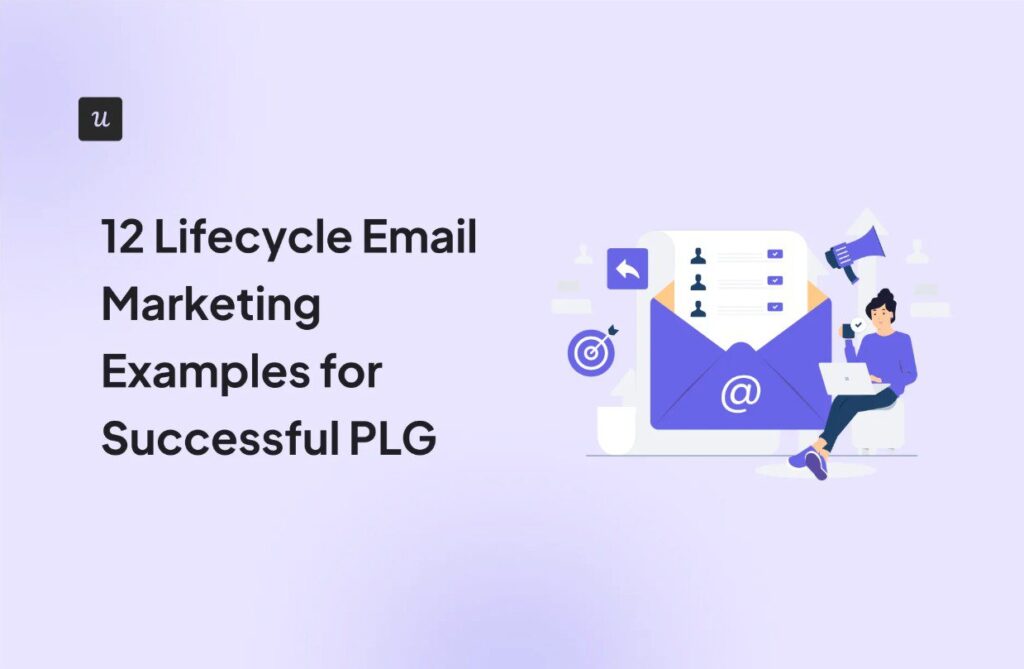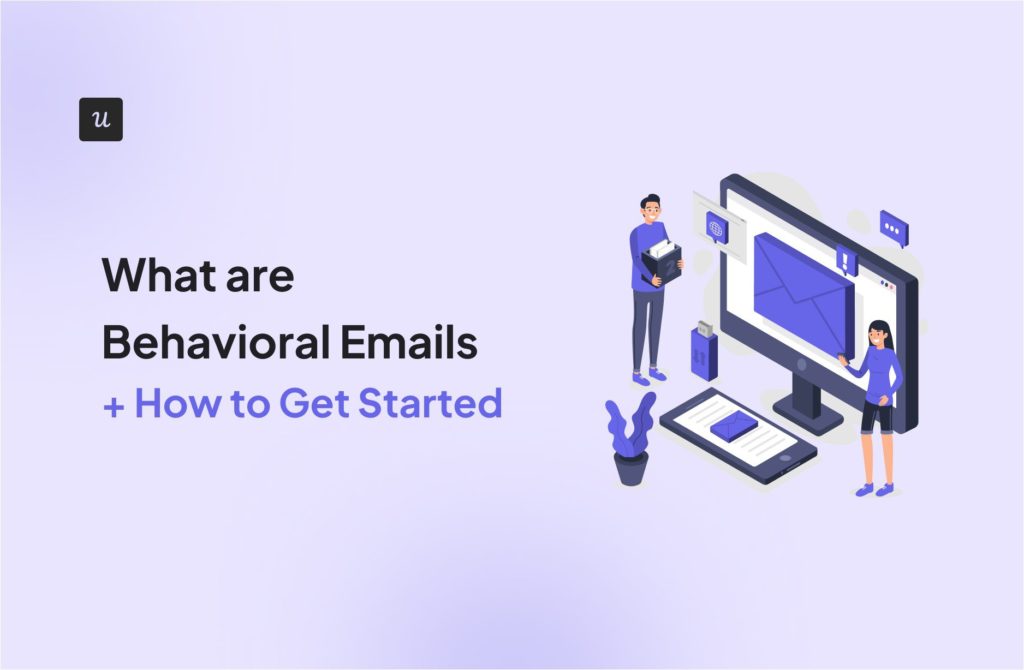
Get The Insights!
The fastest way to learn about Product Growth, Management & Trends.
What are the stages of the SaaS marketing funnel?
As the SaaS model is subscription-based, it’s heavily reliant on customer retention. This distinguishes the SaaS marketing funnel from that of e-commerce businesses.
SaaS marketing funnels consist of five stages: awareness, consideration, conversion, retention, and loyalty. Let’s take a brief look at them.
Awareness stage
The awareness stage is where potential customers get to know about your product for the first time. This stage is thus about brand building.
Your first customer touchpoint at this stage will likely take place via a social media post or a search engine result. Thus, you should focus on your content marketing and SEO strategies and drive potential users to make the first click. Another idea could be leveraging paid advertising that sends just the right brand message to attract visitors.
Consideration stage
The consideration stage is when users are already aware of the problem they are experiencing and are returning to interact with your SaaS product for the second time. They want to try out your product.
Users can now attend your product webinars, request a demo to know more about your product, sign up for your newsletter, or read a case study on your blog.
Conversion stage
The conversion stage is the decision-making stage. After evaluating your product, leads will convert to paying customers if they find your product worth investing in.
However, the definition of conversion differs from business to business. Your conversion target could be free trial to paid conversions, marketing-qualified lead to product-qualified lead conversion, or product-qualified lead to sales-qualified lead conversion.
Retention stage
The retention stage is about meeting and even exceeding customer expectations. This is where you provide continuous value to users, so they stick to your product. Plus, the retention stage presents an excellent opportunity for expanding your monthly recurring revenue through upsells and cross-sells.
Loyalty stage
Going beyond retention, this stage is where your customers find so much value in your product that they start actively advocating for it. They refer your product to others through word-of-mouth (e.g., online reviews) and bring in a crowd of new users or visitors.
The loyalty stage thus consists of your power users. It is critical for you to appreciate your loyal customers and help them in spreading the positive word about your product.
What are the key marketing funnel metrics and KPIs to measure success?
Now, let’s see which marketing funnel KPIs are the most important at each stage.
Awareness stage marketing funnel KPIs
Are you looking for metrics to check whether you are attracting your target market?
Ad clicks
Your ads won’t be effective if they’re not relevant to your target audience. Ads should resonate with potential customers and help them see how your product is worth their money.
The number of ad clicks lets you see how many users are interested in the ads, thus helping you improve your awareness strategy.
Blog post views
If your website has a blog, that’s another means of marketing your product to visitors. A visitor may come across one of your blog posts while looking for a solution. And who knows, they may even realize the value of your product along the way.
This makes it crucial for your blog posts to cover all the relevant points about a particular topic so that readers find it helpful. Moreover, they are a great way of branding yourself as the best solution for readers’ particular pain points.

SEO rankings
Search engine optimization is a powerful means of reaching potential users organically. The keywords you use for your blog posts should be relevant to your product and rank high on search results, so potential users don’t miss out on them.
SEO rankings help you see how good your organic marketing initiatives are.
Consideration stage marketing funnel KPIs
How will you know whether visitors have shown interest in your product? Here are three metrics to track this.
Pricing page clicks
If someone considers using your product, they will check the pricing page to know how much they have to pay for it. Thus, you should keep track of the number of pricing page clicks and identify the subscription plan with the highest number of clicks.
It’s better to have more than one pricing package to let your users choose the one that would suit their needs the best. Plus, you should attach relevant calls-to-action to each plan so interested prospects can know how to contact you.
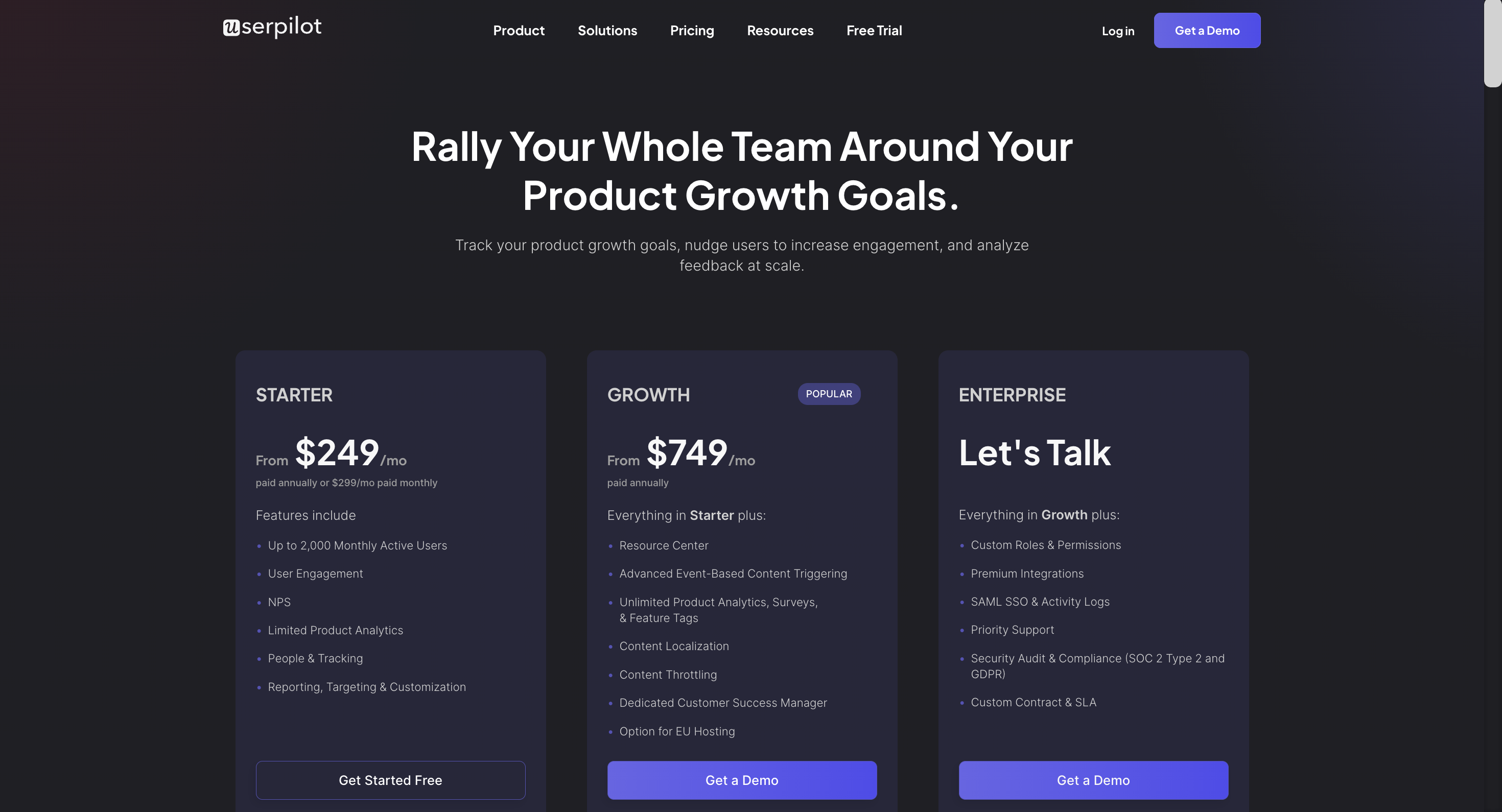
Case study views
An interested visitor is likely to check out a case study on your website. This is because case studies are detailed accounts of a customer’s success stories with your business.
The more visitors read your case studies, the more likely they are to develop a good perceived value of your product and convert to a user in the next stage.
Number of demos requested
Another way prospects show interest is by asking your sales team to show the product in action. More demo requests mean you have more opportunities to highlight the core features of your product and how they can help users achieve their goals.
Conversion stage marketing funnel KPIs
How successful are your marketing and sales efforts at converting prospects into customers?
Marketing Qualified Leads to Product Qualified Leads conversion rate
Your marketing-qualified leads (MQLs) are prospects or leads who have only interacted with your marketing initiatives. They have shown some interest in your marketing activities but might not be interested in your product yet.
On the other hand, product-qualified leads (PQLs) are the users who have tried out your product and gained value from it. Keeping a high MQL to PQL conversion rate increases the likelihood of leads becoming paying customers.
To measure the rate, divide the number of MQLs by that of PQLs, and multiply the ratio by 100%.
Product Qualified Leads to Sales Qualified Leads conversion rate
Now, what are sales-qualified leads (SQLs)? They are the leads who are interested enough in your product so that you can convince them to make a purchase. A high PQL to SQL conversion rate suggests your sales and marketing efforts have paid off.
To calculate the rate, divide the number of PQLs by that of SQLs, and multiply the result by 100%.
Free trial to paid conversion rate
Another metric for tracking conversion is the free trial to paid conversion rate. Your free trial users are PQLs and are much easier to convert than MQLs. The higher the trial-to-paid conversion rate, the lower your customer acquisition cost.
To measure the rate, divide the number of trial users who became paying customers by the total number of trial users during a specific period and multiply the value by 100.
Retention stage key performance indicators
How successful are you at retaining your converted customers?
User retention rate
Retention rate is the percentage of users who continue to use your product because of the value they get from it. Here’s how to calculate it:
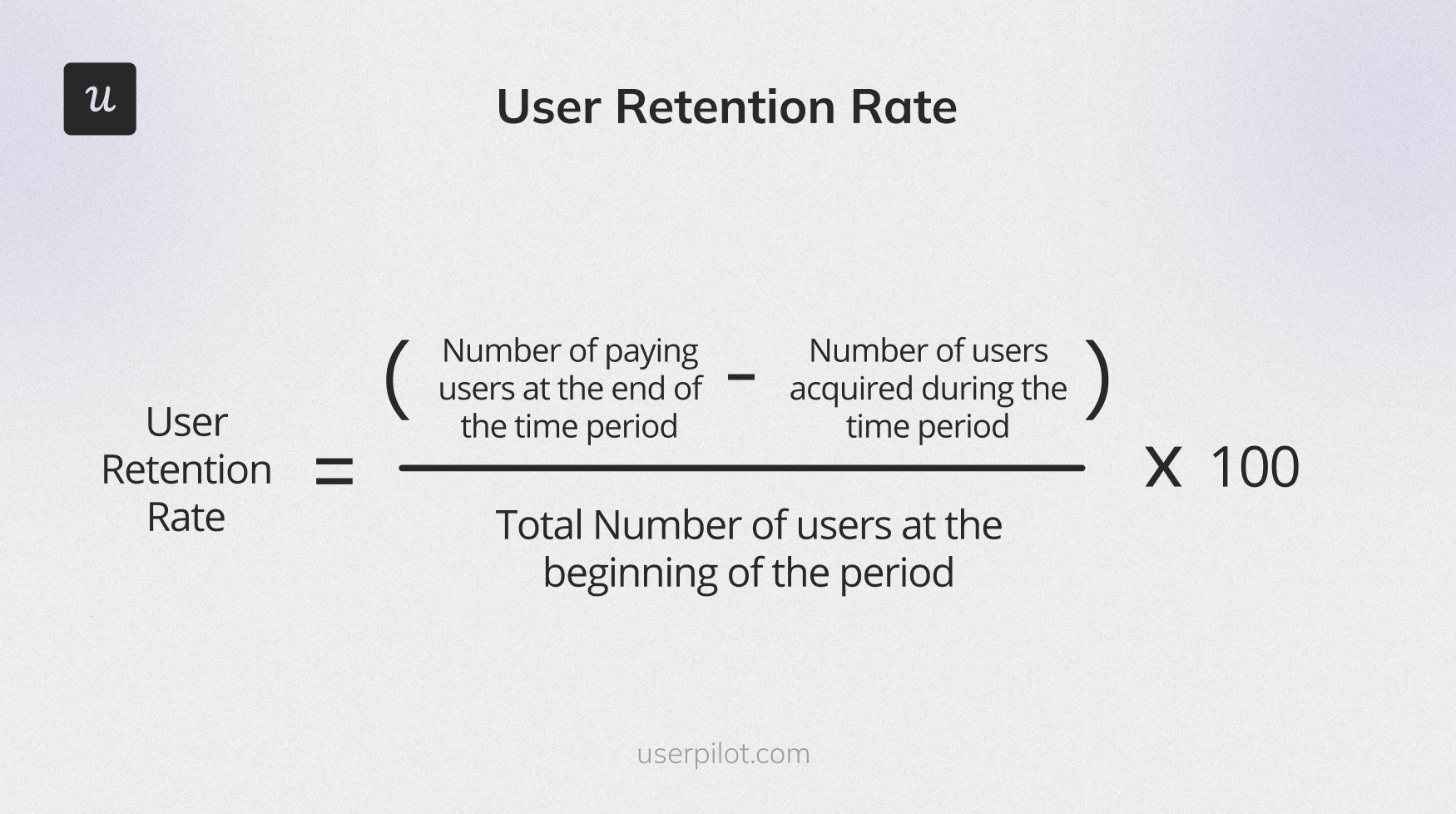
Customer retention rate is made all the way more important for SaaS businesses, as repeat purchases are a must to make the business sustainable. Thus, your goal here is to prevent churn and increase customer retention.
Customer lifetime value
Customer lifetime value (CLV) is the expected revenue stream your business can generate from one customer over the period they are a paying customer. You can get customer lifetime value by multiplying average customer value and the average customer lifespan.
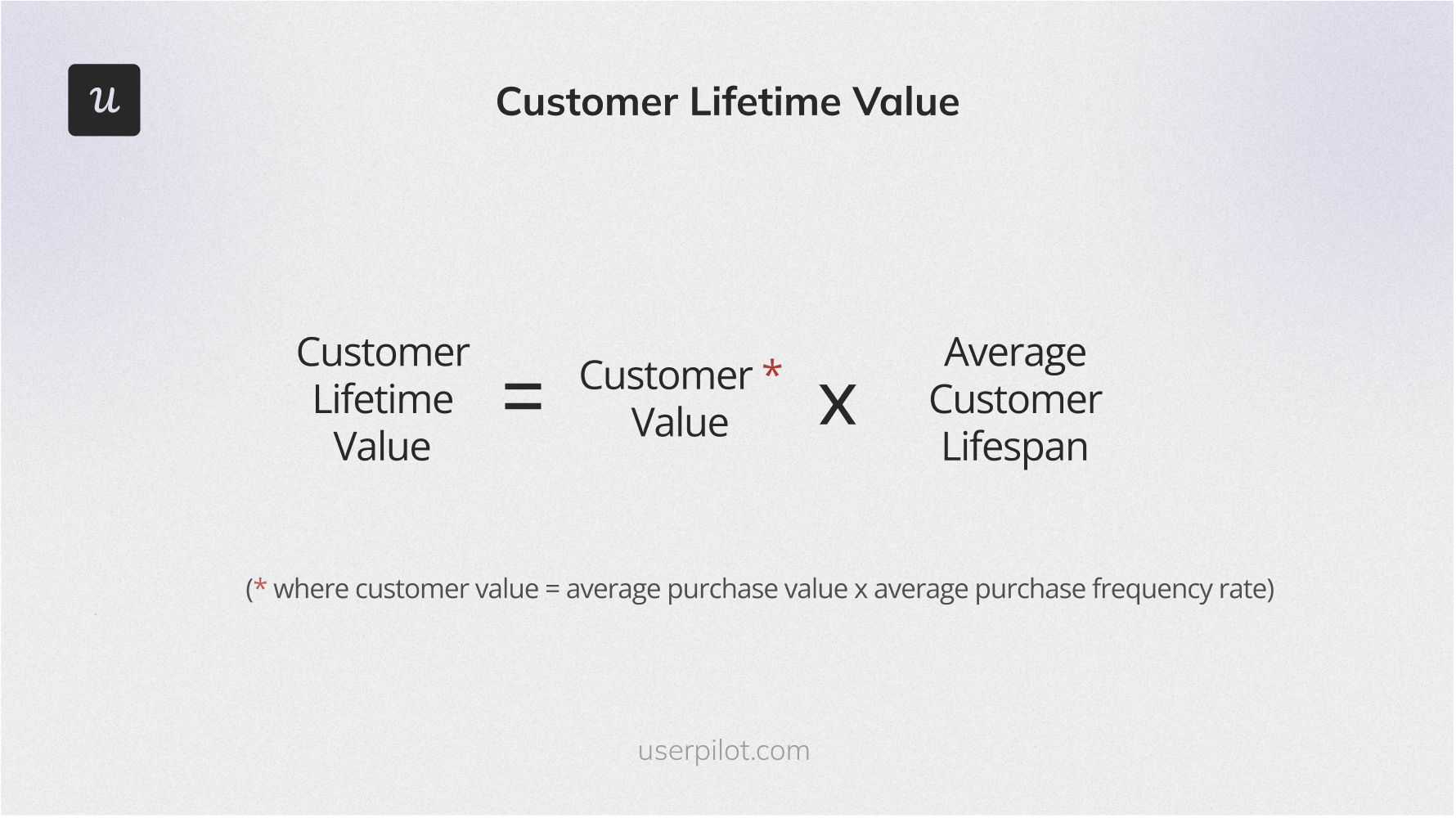
Your CLV should be higher than your customer acquisition cost. In fact, the CLV/CAC ratio should be at least 3:1 to maintain a financially healthy business.
Customer satisfaction score
The customer satisfaction score (CSAT) is a measure of a customer’s satisfaction level and experience with a particular feature, product, or interaction. To get this score, send a CSAT survey that simply asks users to rate their experience on a scale, e.g., from 1 to 5, count the number of satisfied customers and follow this formula:

Track CSAT at various touchpoints in the customer journey to understand the overall level of user satisfaction.
Customer churn rate
The churn rate measures the percentage of customers who downgraded or canceled their subscription plan. It’s equal to the number of customers who left during a given period divided by the number of customers at the start of that period, multiplied by 100.
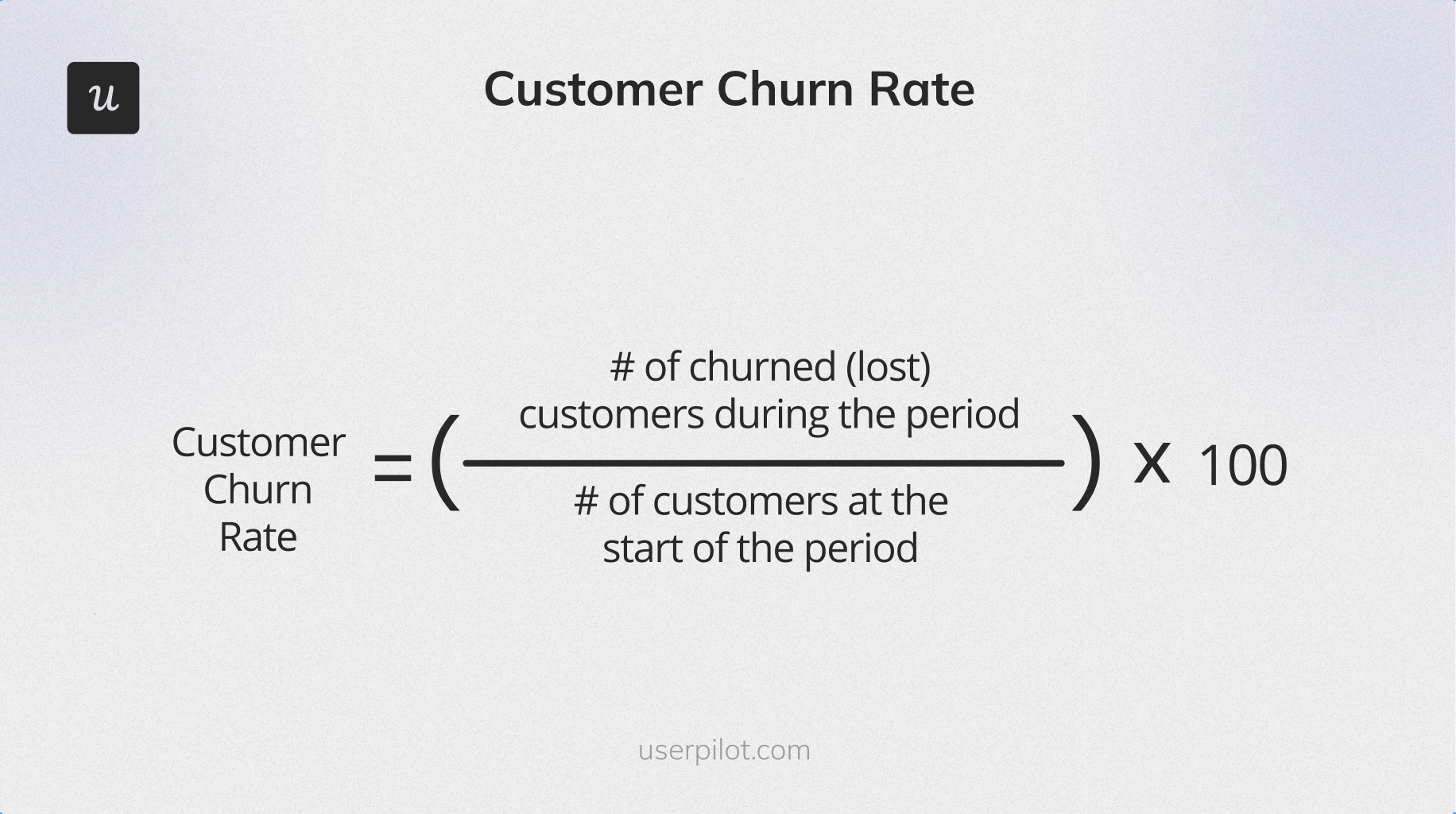
Churn is on the flip side of retention. Reducing churn will improve your retention rate, which in turn, will increase your CLV.
Loyalty stage key performance indicators
How loyal are your retained customers?
Net Promoter Score
The net promoter score (NPS) is a key metric for measuring user sentiment and loyalty.
You should use an NPS survey that asks users to rate their likelihood of recommending your product to others on a scale from 1 to 10. This gives you three sets of customers, as shown below. The NPS is the difference between the percentage of promoters and detractors.

NPS feedback analysis helps you understand what makes detractors unhappy. You can offer improved, personalized experiences to them and bring them back from the verge of churn.
Number of reviews or recommendations given
Along with measuring the likelihood of a recommendation, you should also track the number of recommendations or reviews actually given. The reviews help you know exactly what users feel about your product.
How to track the marketing funnel KPIs with Userpilot
Userpilot is a product growth platform that allows tracking and optimizing the metrics at different stages of the customer journey. Here’s how Userpilot can help you track your marketing funnel KPIs.
Use welcome screens to capture customer data for more effective marketing efforts
With Userpilot, you can create welcome screens code-free!
Welcome screens allow you to not only greet new users but also collect their data. You can ask questions like what’s their goal, where they came from, and/or how they heard about your product. This will allow you to personalize the flows and make them relevant.
Here is how Postfity uses welcome screens, created by Userpilot, to capture customer data for later use.
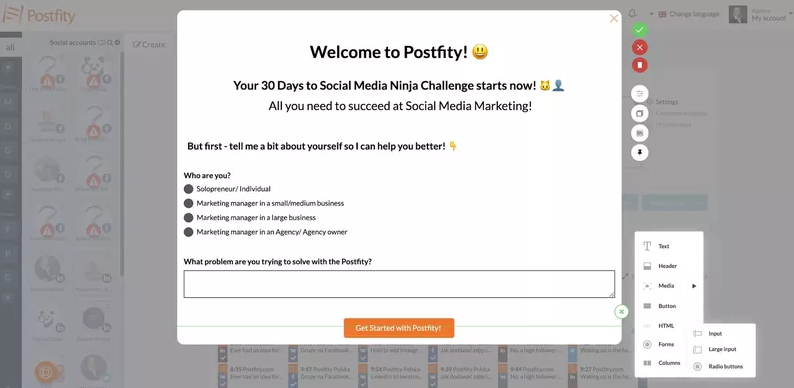
Track in-app user interactions and detect the drivers of retention
Monitor customer interactions inside your product to see what engages them the most. Identify the features that are used frequently and those that are not used at all. The latter could be due to a lack of awareness or a lack of value.
Tracking and analyzing user interactions helps you understand what motivates them to stick to your product or what causes churn.
With Userpilot, you can automatically track key in-app interactions such as clicks, text inputs, and form submissions.
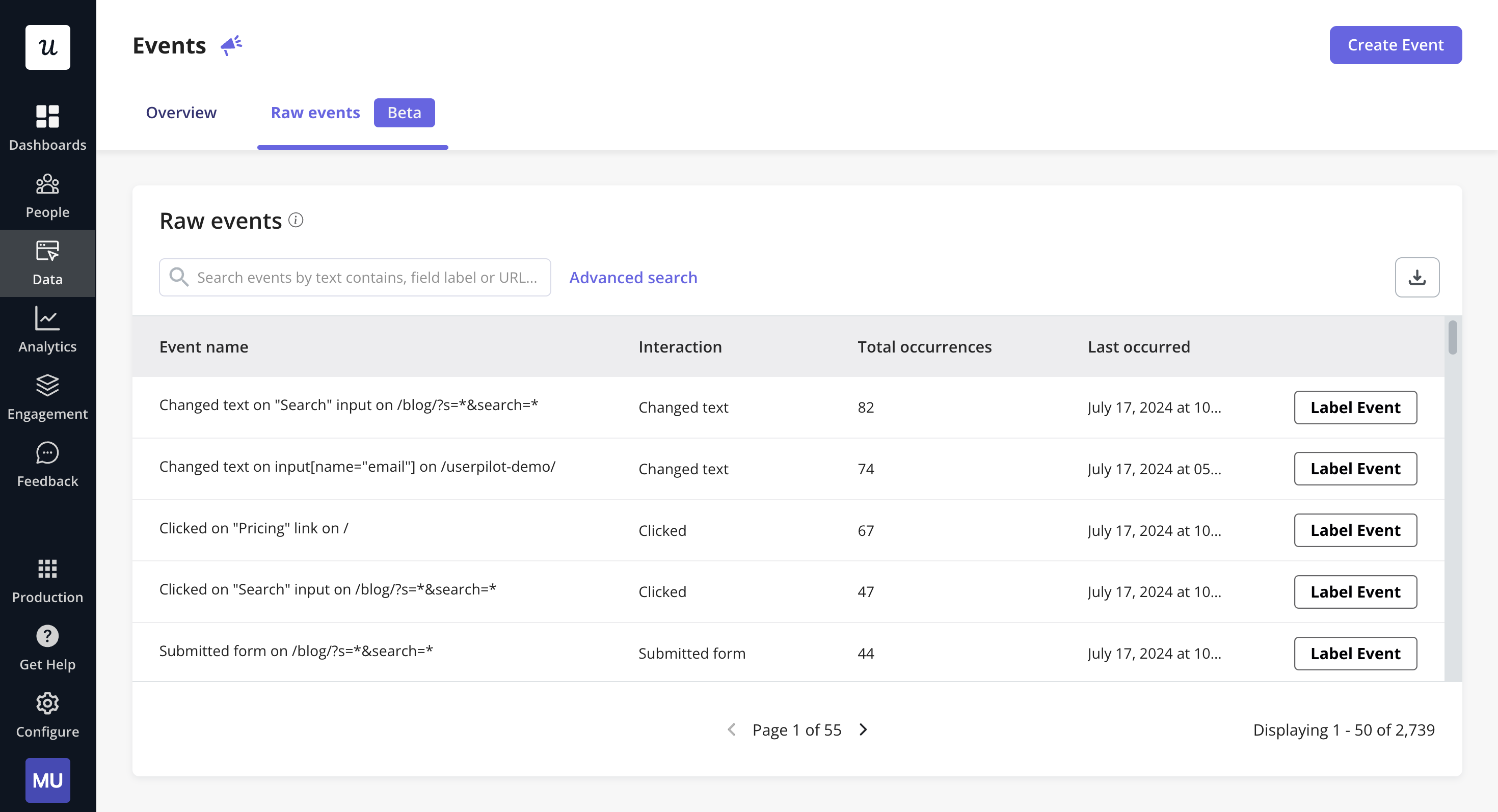
Visualize key metrics on analytics dashboards
With Userpilot, you can build custom analytics dashboards or use a template, set up the metrics that are most important to your business, and choose how you want to view them.
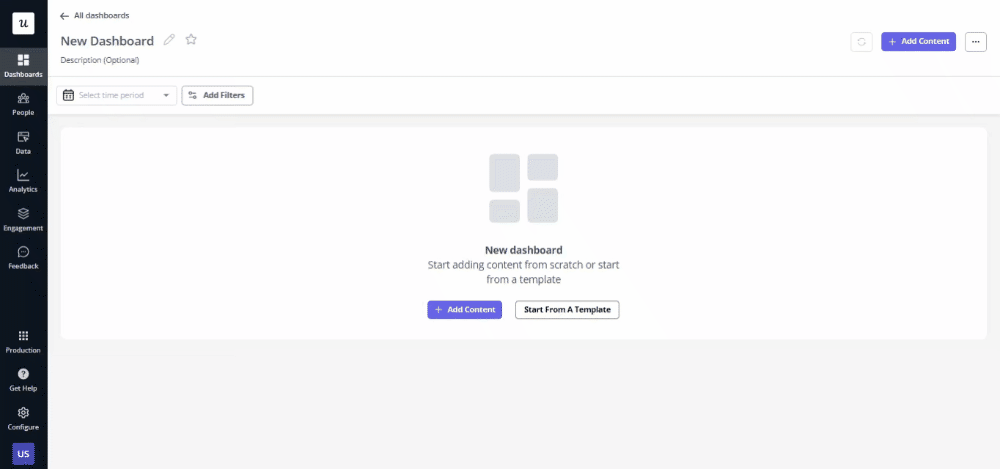
Send microsurveys across different stages to collect feedback and measure customer loyalty
Customer feedback is crucial for tracking metrics like NPS and CSAT.
Userpilot lets you create and send surveys after major milestones or interactions to measure user satisfaction and loyalty. You can even analyze the responses and categorize feedback based on answers. Then, you can use the data to act on the feedback and improve customer experience.

Onboard and engage mobile app users by creating personalized messaging, push notifications, and surveys with Userpilot.
FAQs
What is a marketing funnel?
A marketing funnel is an overview of the stages a potential customer goes through during their journey, from initial awareness and acquisition to conversion and, ultimately, advocacy.
Why are marketing funnels important for an effective marketing strategy?
The marketing funnel allows businesses to understand customers’ needs and friction points at every stage, optimize their product marketing campaigns, and drive more revenue.
What is the difference between a marketing and a sales funnel?
Sales and marketing funnels are interconnected concepts—the marketing funnel focuses on attracting and nurturing potential customers, while the sales funnel emphasizes converting those leads into paying customers.
Conclusion
The KPIs discussed in this article will help marketing teams develop well-informed strategies as well as track their own progress at each stage of the marketing funnel.
Keep an eye on the key metrics and compare them with industry benchmarks to see how you’re performing.
Want to start tracking your marketing funnel KPIs and improve those metrics code-free? Get a Userpilot demo and learn how to boost your product marketing efforts.


